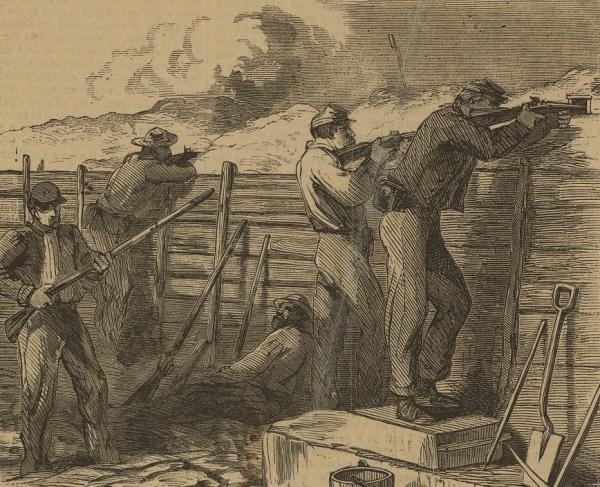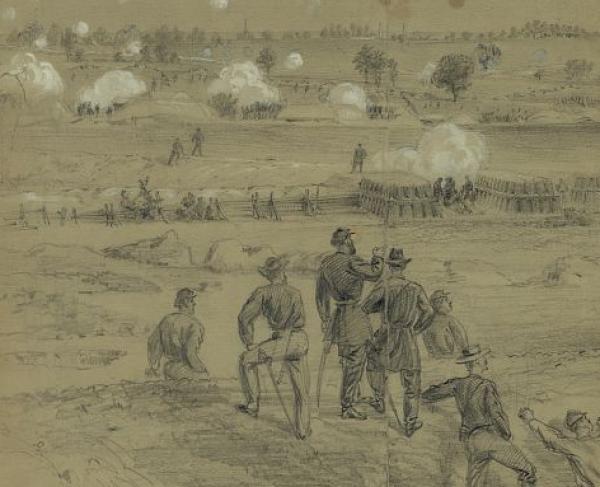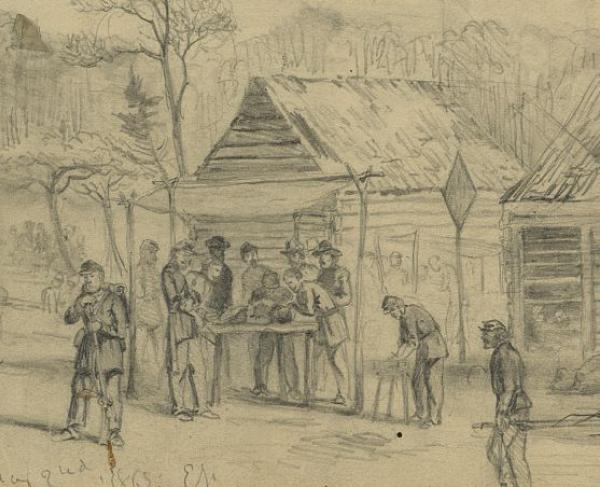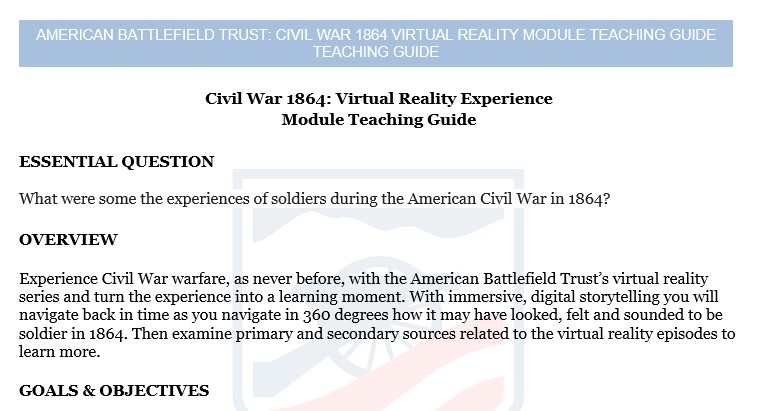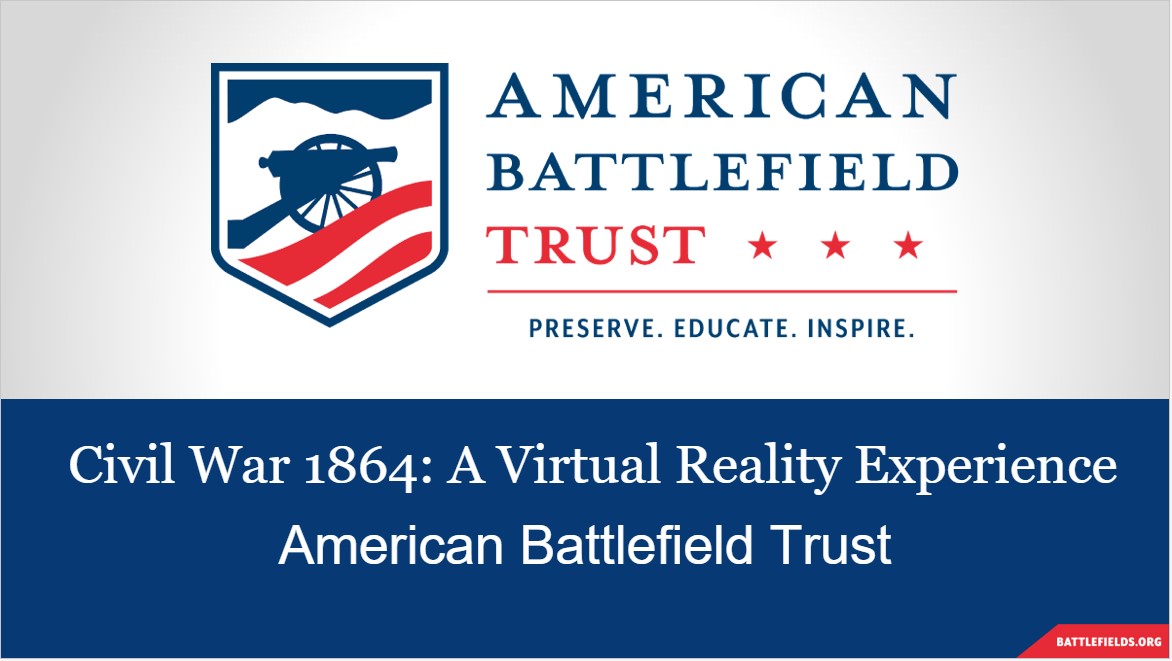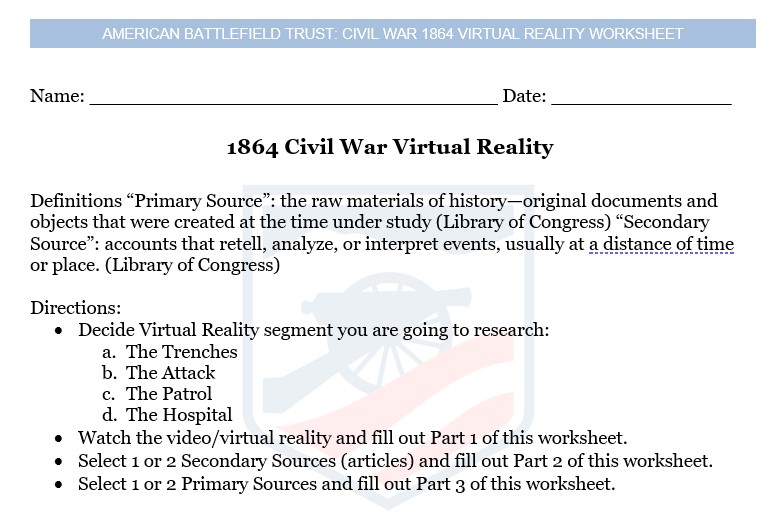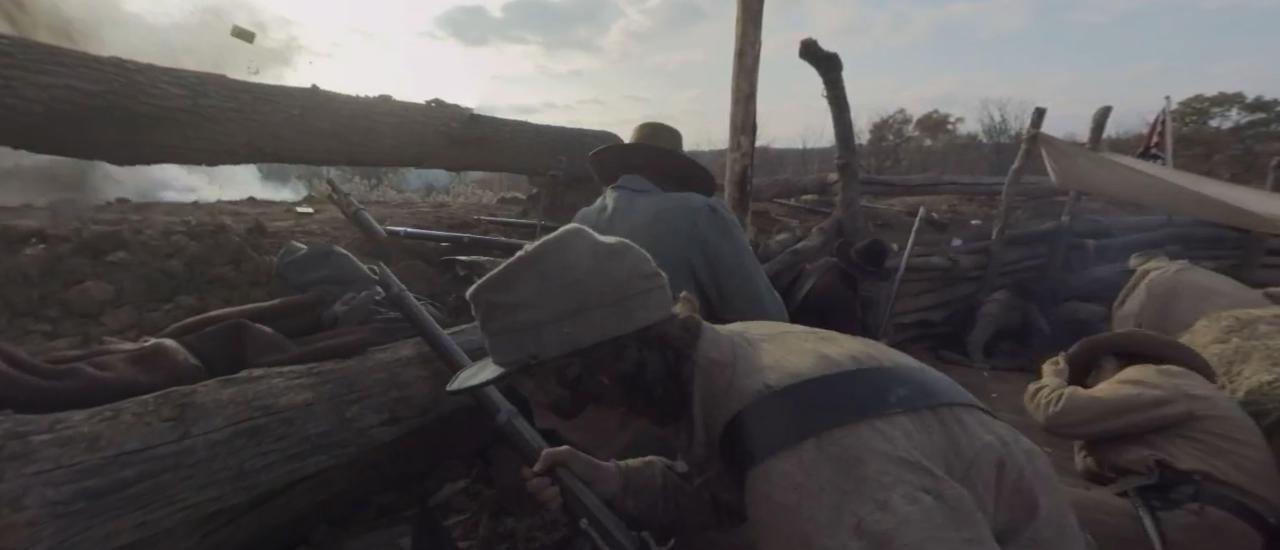
Civil War 1864: A Virtual Reality Learning Module
A curriculum module for use in high school classrooms.
Experience Civil War warfare, as never before, with the American Battlefield Trust’s virtual reality series and turn the experience into a learning moment. With immersive, digital storytelling you will navigate back in time as you explore in 360 degrees how it may have looked, felt and sounded to be soldier in 1864. Then examine primary and secondary sources related to the virtual reality episodes to learn more.
This learning module is used with the 1864 Civil War Virtual Reality Experience.
Here on this page you find Lesson Resources organized for each of the four segments of the VR Experience, along with a Teaching Guide, Worksheet, and other useful classroom items.
This Teaching Guide and Lesson Resources can be used as a prepared resource by following this learning plan which aligns to NCSS and Common Core Standards.
This Lesson Plan's assets can also be used on their own as supplemental resources. The display format is prepared for easy access, exploring, and learning.
1864, The Trench: Virtual Reality Lesson Resources
1864, The Attack: Virtual Reality Lesson Resources
1864, The Patrol: Virtual Reality Lesson Resources
1864, The Hospital: Virtual Reality Lesson Resources
Goal: Through experiences with Virtual Reality 360 experiences (VR), additional secondary sources, and primary sources, students will acquire new information about life as an American Civil War soldier and further their understanding of this experience in history.
Objectives:
- With secondary sources, students will note ideas or facts that are particularly interesting to them as well as any questions they have.
- Students will discuss orally at least one of their ideas, facts, or questions.
- Given primary source material students will study the material and complete a series of analysis questions.
- Given their completed work, primary, and secondary sources, students will describe, in writing or orally, at least three features of the experience of American Civil War soldiers.
Check out the Teaching Guide for more instructions on using the prepared Lesson Plan.
ACTIVITIES
- Use the Lesson’s PowerPoint to explore the context and history; the PowerPoint introduces Essential Questions and lays foundational knowledge about the Virtual Experience.
- Watch the VR video set together or individually. Or have students select at this time the segment they would like to study.
- Share the Worksheet with the students.
- Have the students decide which VR segment they would like to research:
- Have the students fill out Part 1 of the Worksheet.
- Secondary Sources (articles) and Primary Sources related to each segment are available on these Lesson Plan Pages.
- The Trench Resources
- The Attack Resources
- The Patrol Resources
- The Hospital Resources
- Have the students fill out Part 2 and 3 of the Worksheet, using the Secondary Sources and Primary Sources
- Invite the students to share their observations or conclusions verbally with the class for discussion.
Common Core State Standards- ELA & History/Social Studies
Grades 9-10
- Key Ideas and Details:
- CCSS.ELA-LITERACY.RH.9-10.1
- Cite specific textual evidence to support analysis of primary and secondary sources, attending to such features as the date and origin of the information.
- CCSS.ELA-LITERACY.RH.9-10.2
- Determine the central ideas or information of a primary or secondary source; provide an accurate summary of how key events or ideas develop over the course of the text.
- CCSS.ELA-LITERACY.RH.9-10.1
- Craft and Structure:
- CCSS.ELA-LITERACY.RH.9-10.4
- Determine the meaning of words and phrases as they are used in a text, including vocabulary describing political, social, or economic aspects of history/social science.
- CCSS.ELA-LITERACY.RH.9-10.4
- Integration of Knowledge and Ideas:
- CCSS.ELA-LITERACY.RH.9-10.9
- Compare and contrast treatments of the same topic in several primary and secondary sources.
- CCSS.ELA-LITERACY.RH.9-10.9
Grades 11-12
- Key Ideas and Details:
- CCSS.ELA-LITERACY.RH.11-12.2
- Determine the central ideas or information of a primary or secondary source; provide an accurate summary that makes clear the relationships among the key details and ideas.
- CCSS.ELA-LITERACY.RH.11-12.2
- Craft and Structure:
- CCSS.ELA-LITERACY.RH.11-12.6
- Evaluate authors' differing points of view on the same historical event or issue by assessing the authors' claims, reasoning, and evidence.
- CCSS.ELA-LITERACY.RH.11-12.6
- Integration of Knowledge and Ideas:
- CCSS.ELA-LITERACY.RH.11-12.7
- Integrate and evaluate multiple sources of information presented in diverse formats and media (e.g., visually, quantitatively, as well as in words) in order to address a question or solve a problem.
- CCSS.ELA-LITERACY.RH.11-12.9
- Integrate information from diverse sources, both primary and secondary, into a coherent understanding of an idea or event, noting discrepancies among sources.
- CCSS.ELA-LITERACY.RH.11-12.7
Social Studies - National Council for the Social Studies
- Theme 1: Culture
- Theme 3: People, Places, and Environments
- Theme 4: Individual Development and Identity
This Module
contains the following:
Audience: High school
